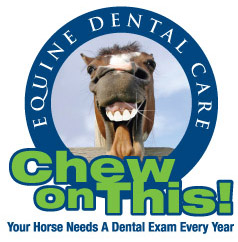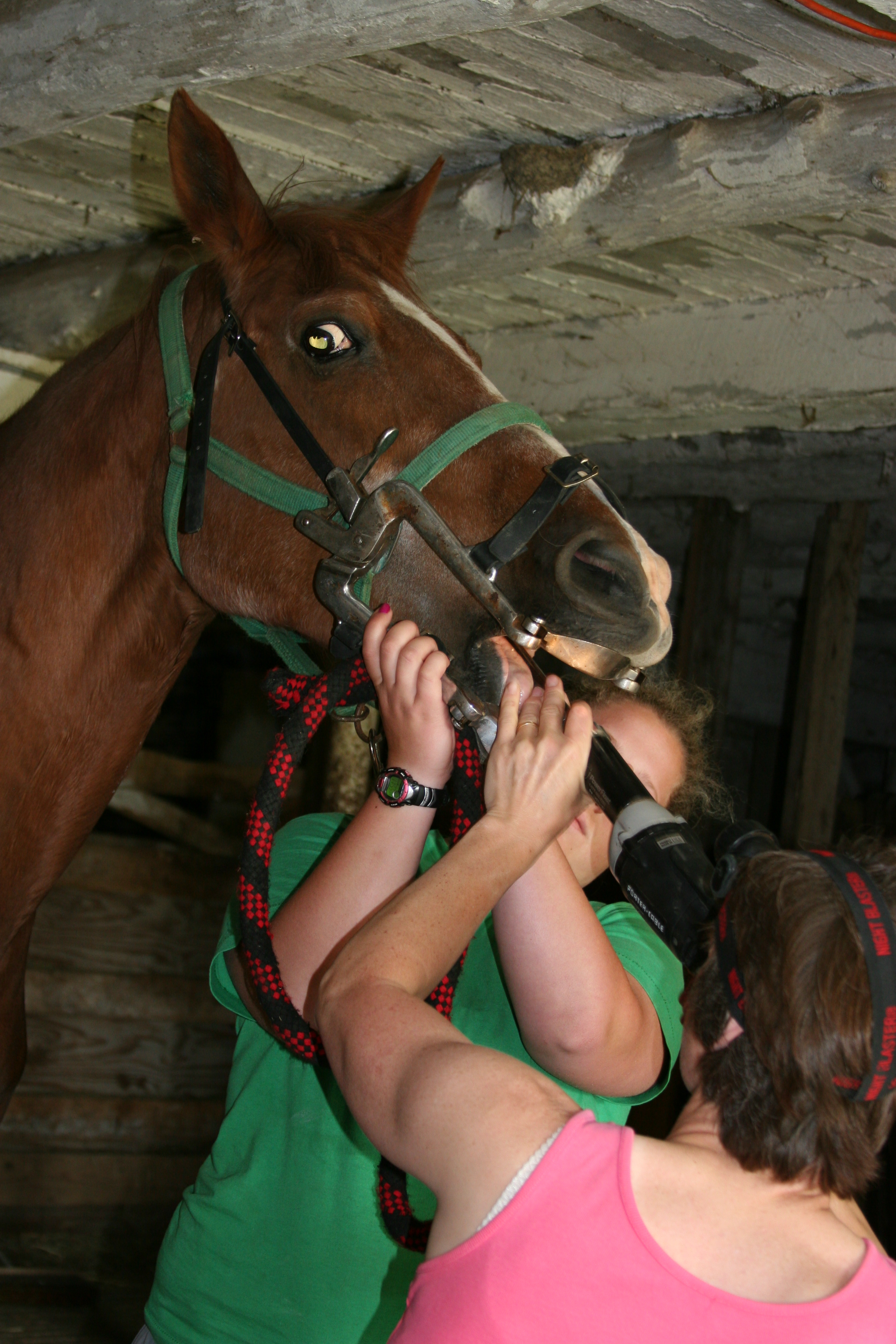 Tuesday, February 4, 2014
Tuesday, February 4, 2014  Maintaining Your Horse's Well-Being with a Healthy Mouth
Maintaining Your Horse's Well-Being with a Healthy Mouth
The old adage "straight from the horse's mouth" may seem more meaningful when you consider that a licensed practitioner can learn so much about an animal's health by examining its mouth.
A Broader Look at Health
Equine dentistry is more than just floating teeth. Floating—the term for rasping or filing the horse's teeth—ensures that the horse maintains an even, properly aligned bite plane. While floating is a physical or mechanical process, equine dentistry is much broader and examines the horse's health more systemically.
The general goals of equine dentistry include:
- Improving the chewing of food
- Relieving pain and treating or curing infection and disease
- Promoting general health, productivity and longevity
Though most people think dentistry is primarily concerned with the teeth and mouth, it also includes the associated structures of the head – for instance the sinuses – and the effect of dental diseases on the health of the rest of the body.
Beyond the comfort and good health of your horse, there are other benefits to proper dental care. Your horse will consume feed more efficiently with less spillage or waste and may perform better and live longer.
Schedule Exams Regularly
Dental disease is a source of pain and infection—it can affect the systemic health of your horse, especially if undetected or left untreated. Routine examination by an experienced, licensed veterinarian will help detect dental disease and other health problems early—before they threaten the well-being of your horse. These examinations make it much easier to diagnose and treat oral diseases early, preventing more severe and costly problems later.
A juvenile horse should have a dental examination when it is foaled, at three months and then every six months until age five. For healthy adult horses, a yearly dental examination is recommended. Horses older than 20 or with a history of dental problems should return to a twice yearly schedule.
Trust Your Veterinarian
Certain observations in your horse may be clues to you or your veterinarian that a complete physical examination and a thorough dental exam may be in order. Has your horse’s general attitude changed? Is the appetite normal? What about the ability to chew? How long does it take to eat? What’s the stool consistency? Is long stem hay present? Are there well-formed fecal balls?
The veterinarian may perform a complete physical examination, and other tests if needed, in order to evaluate the horse for possible risks (i.e., fever, severe anemia, ataxia, etc.) prior to carrying out the dental examination
Veterinary practitioners are best qualified to perform dental care on your animal because they are:
- Trained in equine dentistry, medicine and surgery
- Licensed to practice dentistry
- Equipped with the proper resources to examine, diagnose, and treat dental disease
- Prepared to refer particularly severe or complicated cases to specialists with extensive experience
To safely perform a thorough oral examination, sedation and adequate restraint is recommended.
Treatment may include antibiotics and anti-inflammatories. All are things that a veterinarian is licensed to provide but an owner or layperson is not.
An oral exam should be an essential part of an annual examination by a veterinarian. Every dental exam provides the opportunity to perform routine preventative dental care as well. The end result is a healthier, more comfortable horse.
Reprinted courtesy of the American Association of Equine Practitioners.


